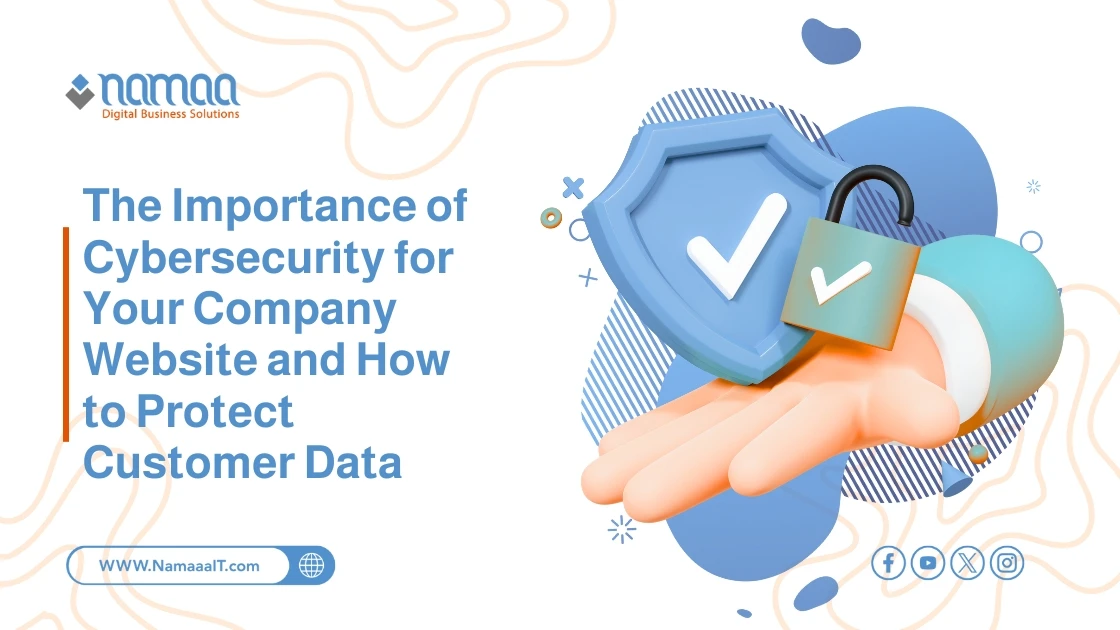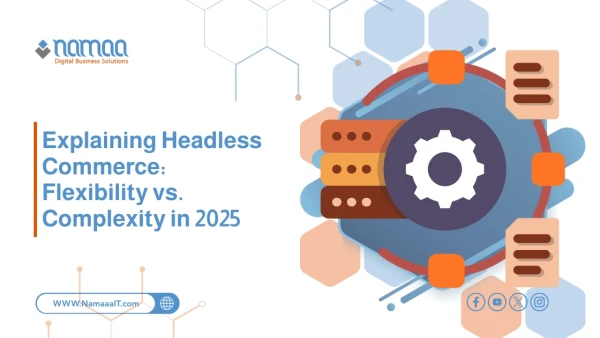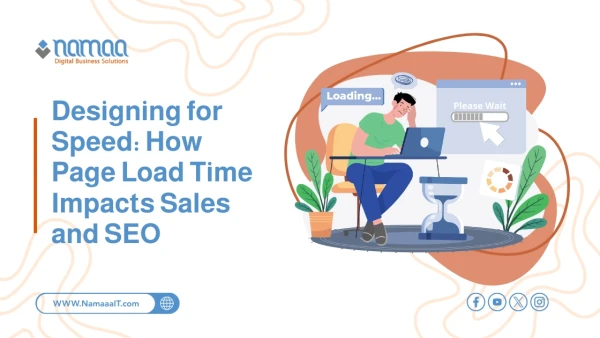Cybersecurity has become an essential element that can no longer be overlooked in today’s digital age, where having an online presence is a necessity for business growth and customer outreach. As businesses increasingly rely on websites and apps for operations and data storage, the importance of protecting digital systems from security threats has grown significantly. Neglecting this area exposes companies to serious risks that can result in significant financial losses, damage to reputation, and a loss of customer trust that’s difficult to recover.
In this article, we will highlight various aspects of website cybersecurity for businesses, present best practices for protecting sensitive customer data, and provide insights into building strong defenses against the growing and evolving cyber threats.
What Is Cybersecurity for Businesses and What Are Its Threats?
- Business cybersecurity, or Information Technology (IT) security, is a set of practices, technologies, and processes designed to protect networks, devices, software, and data from attacks, damage, or unauthorized access. The goal for businesses is to ensure business continuity, protect sensitive information assets (e.g., customer data, intellectual property, financial information), and maintain the company's reputation and stakeholder trust.
- Common cyber threats businesses face today include:
- Malware: Includes viruses, ransomware (which encrypts your data and demands ransom), spyware, and Trojans.
- Phishing attacks: Tricks employees or customers into revealing sensitive data (like login credentials or credit card details) via fake emails or websites.
- Distributed Denial of Service (DDoS) attacks: Floods a server or website with fake traffic to disable it and prevent legitimate access.
- SQL Injection: Exploits vulnerabilities in a site’s database to insert malicious commands that can steal, modify, or delete data.
- Cross-Site Scripting (XSS): Injects malicious scripts into web pages viewed by other users, potentially stealing session data or personal info.
- Man-in-the-Middle (MitM) attacks: Intercepts communication between two parties (like user and website) to spy or alter the data.
- Social Engineering: Psychological manipulation to trick individuals into revealing confidential information or taking harmful actions.
Understanding these threats is the first step toward recognizing the importance of cybersecurity and developing effective defense strategies.
What Are the Consequences of a Website Breach?
A company website breach can have devastating consequences that affect multiple areas of the business. Ignoring cybersecurity is not just a technical oversight—it’s a decision that could jeopardize the future of the company. Consequences include:
- Direct and indirect financial losses:
Direct: Theft of funds, ransom payments.
Indirect: System recovery costs, digital forensics, notifying affected clients, security upgrades, revenue loss due to downtime. - Brand reputation damage and customer trust loss:
A breach feels like a betrayal to customers. When personal or financial data is leaked, customers may stop dealing with the company and share negative experiences, severely affecting reputation and customer retention. - Legal and regulatory repercussions:
Non-compliance with data protection laws (like GDPR in Europe or local laws) may result in hefty fines, lawsuits, and other penalties. - Operational disruptions:
Cyberattacks can shut down websites, payment systems, and databases, causing partial or full operational shutdowns and productivity loss. - Loss of intellectual property and trade secrets:
Hackers may steal patents, designs, customer lists, or business plans, giving competitors an unfair advantage. - Employee morale impact:
Breaches can cause stress for employees, especially if they were involved or their own data was compromised.
How to Effectively Protect Sensitive Customer Data?
Protecting customer data is not only a legal and ethical responsibility but also a foundation of long-term trust. Key strategies include:
- Identify and classify sensitive data: Know what types of customer data you collect (e.g., names, emails, credit card info) and categorize it based on sensitivity.
- Data minimization: Only collect what’s strictly necessary for your services. Less data = lower risk.
- Encryption: Encrypt sensitive data at rest (stored) and in transit (sent online) using strong encryption like AES-256 and TLS/SSL.
- Strict access controls: Apply the Principle of Least Privilege—employees only get access to what they need. Use strong, unique passwords and enable multi-factor authentication (MFA).
- Secure storage solutions: Choose providers with robust security standards and certifications.
- Data retention and disposal policies: Define how long data is kept and securely dispose of it when no longer needed.
- Compliance with regulations: Follow local and international data protection laws (e.g., GDPR, CCPA).
- Anonymization/Pseudonymization: When possible, anonymize data or replace identifiers with aliases for analysis and testing.
read more: Polaris, Shopify, or Zid: Which Platform Best Fits Your Saudi Brand?
Best Practices to Improve Your Website Security
Securing your business website requires a multi-layered approach:
- Regular software updates: Keep CMS (like WordPress), plugins, and themes up to date to patch vulnerabilities.
- Strong passwords & MFA: Enforce strong password policies and enable MFA for all access points.
- Web Application Firewall (WAF): Filters out malicious traffic and protects against SQLi, XSS, etc.
- Regular and secure backups: Back up all data regularly and store it safely (locally and on the cloud). Test restores periodically.
- Security plugins/tools: Use tools that scan for malware, strengthen security, and monitor suspicious activity.
- Vulnerability scans & penetration testing: Regularly test your site for weaknesses and conduct ethical hacking tests.
- Secure coding practices: Developers should follow secure coding standards to avoid common bugs.
- Log monitoring: Watch server and website logs for suspicious access attempts.
- File and folder permission controls: Set correct permissions to prevent unauthorized changes.
- Security training: Educate all admin users on basic security protocols.
Key Technical Aspects for Website Security
Beyond general practices, specific technical elements are critical:
- SSL/TLS Certificates (HTTPS):
What: Encrypts communication between the user and your server.
Why: Boosts user trust and is a ranking factor in Google. - Secure Hosting Provider:
Look for features like DDoS protection, firewalls, malware scanning, backups, and fast support. - Firewalls:
Network Firewall: Controls inbound/outbound traffic.
WAF: Specifically protects the website from common attacks. - Intrusion Detection/Prevention Systems (IDS/IPS):
IDS monitors and alerts on suspicious activity.
IPS blocks it in real-time. - Content Delivery Network (CDN):
Speeds up content delivery and protects against DDoS attacks.
Hides your server’s real IP address. - HTTP Security Headers:
Headers like HSTS, X-Frame-Options, and Content-Security-Policy enforce browser-level protections against attacks like XSS and clickjacking.
Summary
✅ Global cybercrime costs will exceed $10 trillion by 2025, making cybersecurity a non-negotiable priority.
✅ The average cost of a data breach is $4.45 million globally (IBM 2023), and over 60% of customers lose trust in breached companies.
✅ Regulations like GDPR can impose fines up to 4% of annual revenue—legal compliance is crucial.
✅ Over 60% of attacks can be prevented with basic measures like software updates and SSL/WAF.
✅ Human error accounts for over 80% (some sources say 95%) of breaches, highlighting the importance of training staff.









